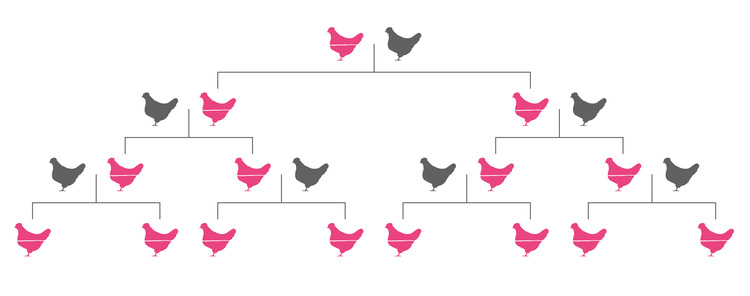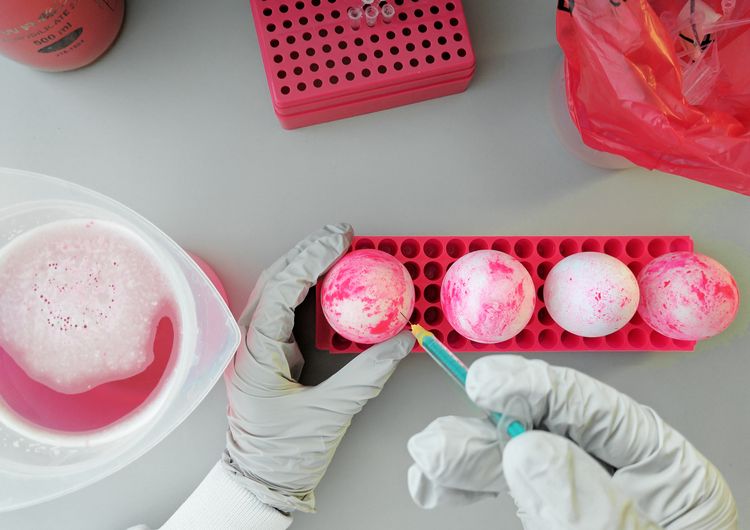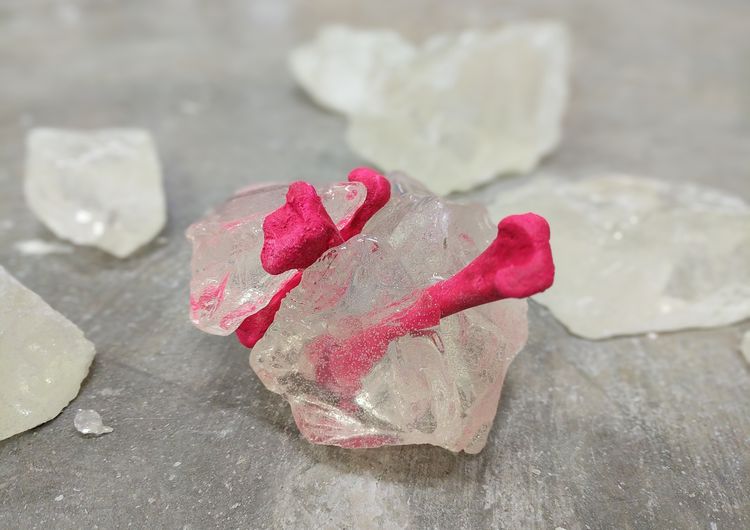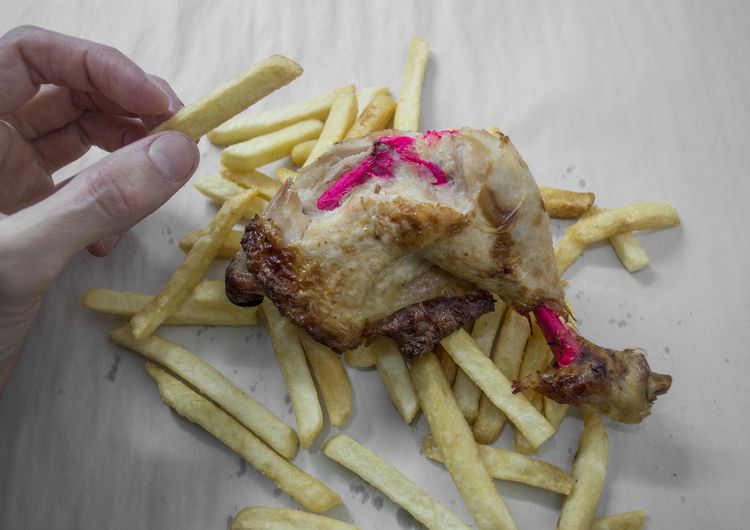Who wants to eat fluorescent pink chicken?
Published 30 May 2017 by Ewen Chardronnet
The “Pink Chicken Project” wants to turn all the chickens on the planet fluorescent pink using CRISPR genetic engineering. Yes, it’s a provocation.
Remember Eduardo Kac’s fluorescent green rabbit? Swedish biodesigners Linnea Våglund and Leo Fidjeland from the iGEM team Stockholm 2016 are calling attention to a similar issue with their Pink Chicken Project design fiction. But while Kac sought to question the status of laboratory animals produced through genetic manipulation, the Swedes want to emphasize the true “nature” of industrially produced meat and the current controversy between natural conservation and synthetic biology—especially since the emergence of CRISPR-Cas9, which continues to provoke both positivist and negativist scientific speculation.
Trailer for the “Pink Chicken Project”:
Welcome to the Anthropocene?
In just a few years, the technique of genetic engineering has become a considerable economic issue. It could offer very beneficial medical applications, for example by eradicating malaria by modifying the genetic code of mosquitos. But it also raises serious concerns about its potential misappropriation by biohackers (as in the Odin affair), or a biotech industry gone rogue without ecological ethics, or international terrorism that could develop a new generation of terrifying biological weapons.
Is CRISPR biotechnology adding fuel to the ecological fire? On one side, conservationists fear the irreversible modification of living things and our human impact on the environment in general, i.e. the Anthropocene on the scale of geological ages. On the other side, synthetic biologists are impatient to use genetic engineering to develop a new biodiversity to “benefit humanity”, in the name of a “good Anthropocene”.

So what exactly is the goal of the Pink Chicken Project? Presented as a serious bioengineering entreprise and eco-awareness campaign, the project intends to modify the genetic code of common chickens (Gallus gallus domesticus) in order to color their feathers and even their skeleton fluorescent pink. The operation, which the authors insist is harmless to the chickens, will be realized through the genetic engineering of carminic acid in the chicken’s genetic pool. Carminic acid is produced naturally by cochineal insects and has been synthesized since 1991. Carmine dye is a common food colorant known as E120.

Six-week-old chickens
According to the biodesigners, a single chicken would suffice to spread the pink gene. The Pink Chicken Project intentionally selected the common species of domestic chicken raised for meat consumption for two main reasons. First, because their very short lifespan (six weeks) would allow them to “pinken” the entire species within just a few years. “For the first time, we have the possibility of altering an entire species,” they write. Second, because this action would attract massive attention to the irreversible aspect of the Anthropocene, as the accumulation of bones of millions of chickens consumed every year worldwide could leave a geologically pink trace in future rock strata.


Can you see yourself eating chicken wings or tandoori chicken with pink bones? The biodesigners also see this image as a way to raise awareness of the environmental impact of our massive chicken consumption.

But as the origin of the pink chickens could get lost in a society that tends to forget the impact it has on its own environment, the project plans to leave a message for future generations encoded in the chicken’s DNA:
“We, humans of planet earth, write this message at the beginning of the Anthropocene, year 2017. The current devastation of the planet is not the result of activities undertaken by the whole species Homo Sapiens: instead it derives from a small group of humans in power. We urge you to fight this oppression: for it enables and aggravates the anthropocentric violence forced upon the non-human world. Sent in hope that you have re-imagined us as a biological organism, joined in symbiosis with each other and the planet.”
In order to stimulate reflection around the controversy surrounding CRISPR biotechnology, the Pink Chicken Project invites the public to participate by ordering pink eggs through their website. Are you ready to accelerate the dissemination of pink chickens?

Order (or not) an egg from the Pink Chicken Project
